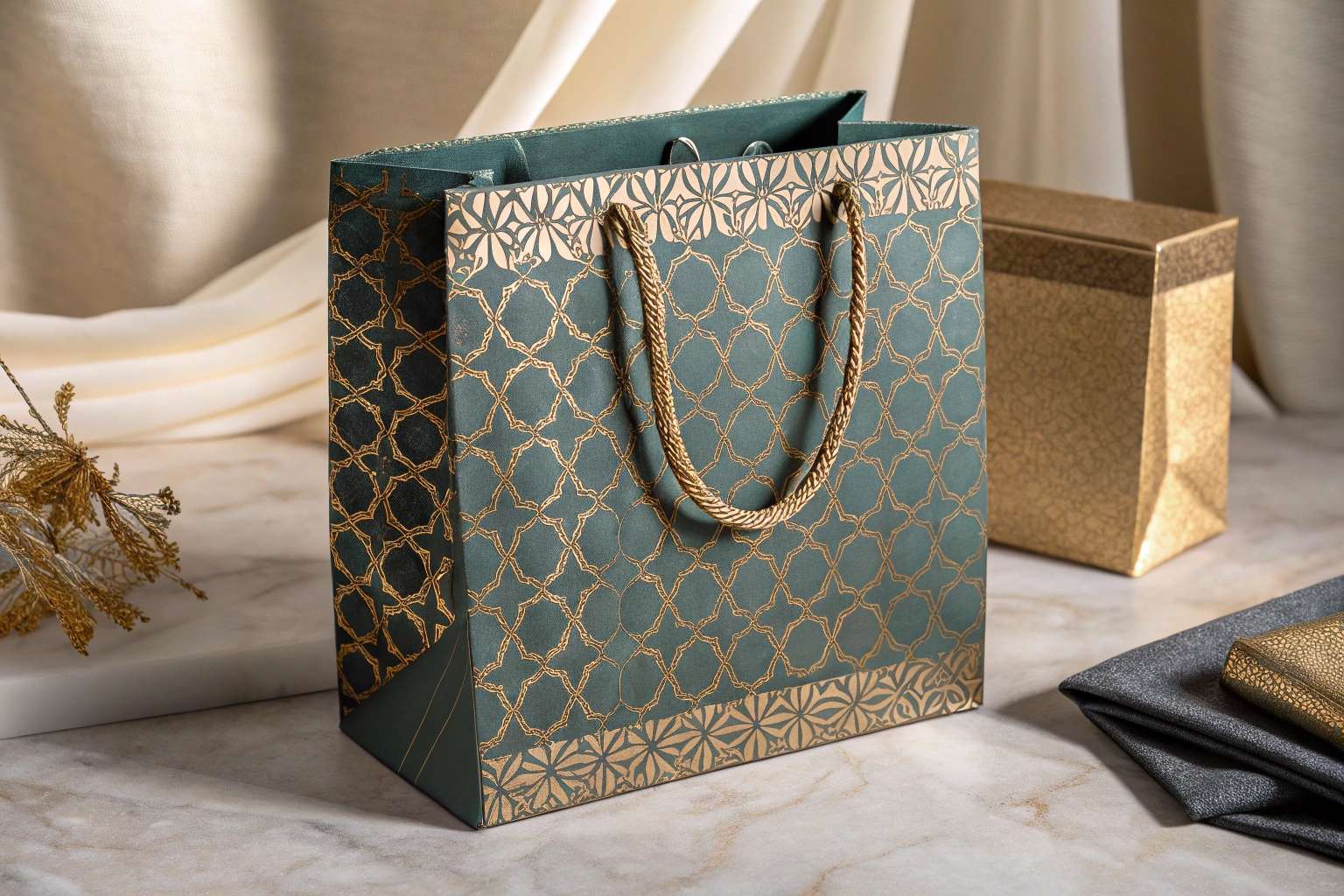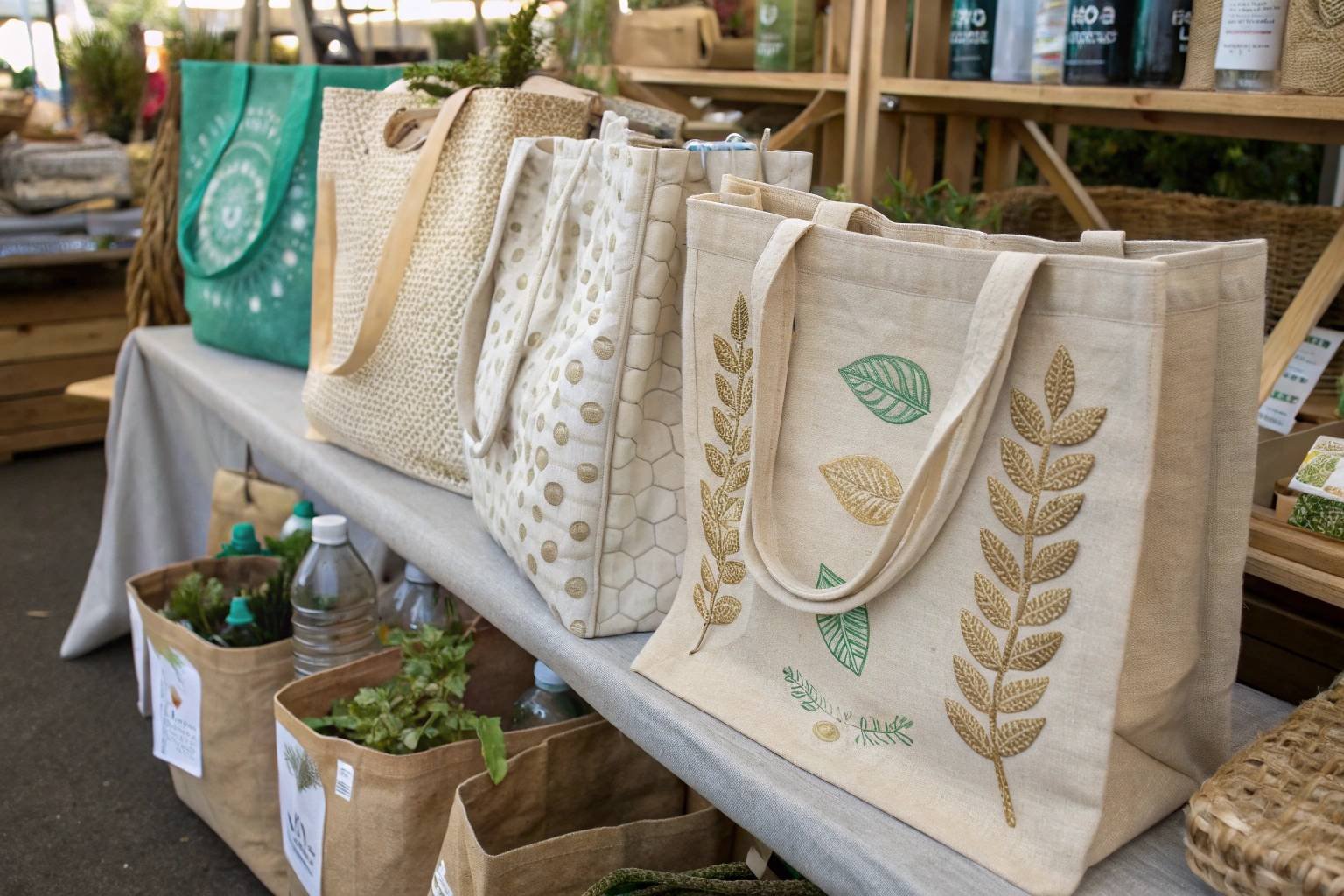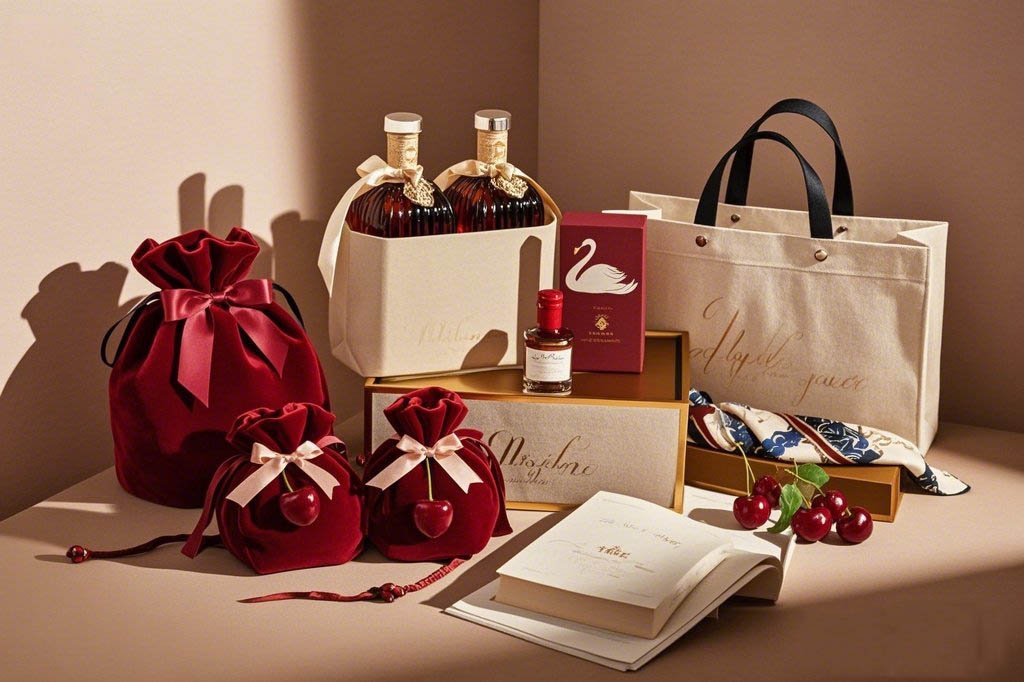Struggling to pick the perfect gift bag? Overwhelmed by choices and unsure what matches your brand or event? Selecting the right bag makes a real difference to the recipient’s experience.
Choosing gift bag materials and styles involves considering the purpose (gift type, event), budget, desired look (basic, luxury), and sustainability goals. Options range from paper and plastic to eco-fabrics like cotton, jute, and rPET, in various sizes and finishes.
Choosing the right gift bag is more than just finding something to hold an item. It’s about complementing the gift, enhancing your brand image, and meeting practical needs. I’ve spent years navigating these choices, and I want to share what I’ve learned to make your decision easier. Let’s break down the key things you need to think about.
What Defines a "Gift Bag" and What Is Its Primary Purpose?
Confused about what makes a bag a "gift bag"? Need clarity on its main job beyond just holding things? Understanding its core function helps you choose wisely for maximum impact.
A gift bag is primarily packaging designed to present a gift attractively and conveniently. Its purpose is to enhance the gifting experience, offer easy carrying, and sometimes reflect the brand or event.
Dive Deeper: The Role of a Gift Bag
A gift bag seems simple, but its role goes beyond just containment. I’ve seen businesses transform their customer experience just by choosing the right bag. Let’s explore its functions:
- Presentation: The most obvious purpose is to make the gift look good. A well-chosen bag adds anticipation and shows care. It replaces traditional wrapping paper, often offering a more structured and reusable option. Think about receiving a plain plastic bag versus a nicely designed cotton tote – the feeling is different.
- Convenience: Gift bags make gifts easy to carry, especially for oddly shaped items or multiple small pieces. Handles are key here. This is crucial at events like trade shows or for retail purchases.
- Branding: For businesses, gift bags are prime marketing real estate. Your logo, brand colors, and message can travel with the recipient long after the initial exchange. A durable, attractive bag becomes a walking advertisement.
- Value Perception: As I mentioned, especially for higher-end products, the bag adds perceived value. A luxury item feels less luxurious if handed over in a cheap paper bag. The bag becomes part of the product experience. The packaging should match the item, like putting a fine saddle on a fine horse.
Understanding these purposes helps you see the bag not just as packaging, but as a strategic tool.What Are the Most Common Materials Used for Manufacturing Gift Bags?
Feeling lost in the sea of material options for gift bags? Unsure which is best for durability, cost, or looks? Knowing the common choices is the first step to selection.
Common gift bag materials include paper (kraft, coated), plastic (LDPE, PP non-woven), and various fabrics like cotton, jute canvas, polyester, and newer options like rPET (recycled plastic bottles).
Common Gift Bag Materials Exploring Material Choices
The material you choose dictates the bag’s look, feel, durability, cost, and environmental impact. I work with these materials daily, and each has its place. Let’s break them down:
- Paper:
- Kraft Paper: Often brown, sometimes bleached white or colored. It offers a natural, rustic look. It’s relatively inexpensive and recyclable/biodegradable (if uncoated and untreated). Good for general retail and simple gifts.
- Coated/Art Paper: Smoother finish, often glossy or matte laminated. Allows for high-quality printing. Feels more premium than basic kraft but is harder to recycle. Common for retail brands wanting a polished look.
- Plastic:
- LDPE (Low-Density Polyethylene): Your typical glossy or matte plastic retail bag. Cheap and waterproof but a major environmental concern.
- PP Non-Woven (Polypropylene): Fabric-like feel, made from bonded plastic fibers. Durable, water-resistant, reusable, and relatively low-cost for a reusable option. Often used for promotional totes. Can be recycled in some streams.
- Fabric (Often Reusable):
- Cotton: Soft, natural feel. Takes print well. Ranges from lightweight muslin (for dust bags) to heavy canvas. Biodegradable (if organic/untreated). Costs more than paper or basic plastics.
- Jute: Strong, coarse, natural fiber. Very durable and breathable. Has a rustic, eco-friendly aesthetic. Great for sturdy totes, like carrying wine bottles, as mentioned in my insights. Biodegradable.
- Canvas: Typically made from heavy cotton or linen. Very durable and sturdy. Ideal for high-quality reusable totes.
- Polyester: Synthetic, durable, water-resistant. Can be printed with vibrant colors. Less eco-friendly unless using recycled versions (rPET).
Your choice depends heavily on your priorities: budget, brand image, reusability, and sustainability goals. For everyday items, paper or PP non-woven might work. For a stronger eco-statement or higher perceived value, cotton, jute, or canvas are excellent.Beyond Jute, What Other Eco-Friendly Fabrics Are Used for Reusable Bags?
Want sustainable bag options but looking beyond the common jute? Curious about materials like cotton, canvas, or rPET? Exploring greener fabrics opens up more design and branding possibilities.
Besides jute, popular eco-friendly fabrics for reusable bags include conventional and organic cotton, sturdy canvas (often cotton-based), linen, hemp, and rPET (fabric made from recycled plastic bottles).
Eco-Friendly Reusable Bag Fabrics A Closer Look at Sustainable Fabrics
Sustainability is a huge focus in the bag industry now, and thankfully, we have great fabric choices beyond jute. I always encourage clients to consider these options:
- Cotton:
- Conventional Cotton: Widely available, versatile, soft, printable. However, its cultivation uses significant water and pesticides.
- Organic Cotton: Grown without synthetic pesticides/fertilizers, using less water. Better for the environment but costs more. Look for certifications like GOTS (Global Organic Textile Standard). Often used for premium food retail or ethical brands.
- Canvas:
- Usually a heavier weight cotton (or sometimes linen). Its tight weave makes it extremely durable for long-lasting reusable totes. Perfect for grocery bags, book bags, or high-use promotional items. Can also be organic.
- Linen:
- Made from the flax plant. Strong, absorbent, and dries quickly. Uses less water and pesticides than conventional cotton. Creates a premium, slightly textured look. Biodegradable. Often seen in higher-end applications.
- Hemp:
- Very durable natural fiber. Grows densely, requires little water, and no pesticides. Excellent environmental profile. Texture can be similar to linen. Still gaining mainstream traction but a fantastic sustainable choice.
- rPET (Recycled Polyethylene Terephthalate):
- Fabric made from recycled plastic bottles. Diverts plastic from landfills/oceans. Creates a durable, often smooth, polyester-like fabric. Water-resistant and takes print well. A good way to give plastic a second life, though it’s still a synthetic material.
Here’s a quick comparison:
| Feature | Cotton (Organic) | Canvas (Cotton) | Jute | Lino | Hemp | rPET |
|---|---|---|---|---|---|---|
| Source | Plant (Organic) | Plant (Cotton) | Plant | Plant | Plant | Recycled Plastic |
| Feel | Soft | Sturdy, Textured | Coarse | Crisp, Textured | Textured | Smooth/Polyester-like |
| Durability | Moderate-High | Very High | High | High | Very High | High |
| Eco Profile | Good (Organic) | Good (Organic) | Very Good | Very Good | Excellent | Good (Recycling) |
| Printability | Excellent | Excellent | Good | Good | Good | Excellent |
| Cost | Medium-High | Medium-High | Low-Medium | High | High | Medium |
Choosing between these often comes down to balancing the desired aesthetic, required durability, budget, and specific sustainability message you want to convey.
What Material Characteristics Define a "Luxury" Gift Bag?
Aiming for a high-end feel with your gift bags? Wondering what specific material qualities scream "luxury"? Elevating your packaging requires attention to detail in the materials themselves.
Luxury gift bags are defined by premium materials(heavyweight paper, fine cotton, silk, faux suede, leather), superior construction(reinforced bottoms, quality handles), refined finishes (embossing, foiling), and elegant aesthetics.

Crafting the High-End Experience
Creating a luxury gift bag is about signalling quality and exclusivity. It’s an extension of a premium product or brand. Based on my experience sourcing for high-end clients, these are the key characteristics:
- Material Weight and Texture:
- Paper: Thick, heavy-gauge art paper (250gsm or higher) often with matte or soft-touch lamination feels substantial and expensive. Textured papers also add a tactile richness.
- Fabric: High thread-count cotton, smooth satin, velvet, linen, faux suede (microsuede), or even genuine/faux leather are used. Think about the soft, thick cotton dust bags that come with designer handbags – that’s luxury fabric use.
- Construction Quality:
- Reinforced turnover tops and base cards add structure and durability, preventing sagging.
- Handles are upgraded: Grosgrain or satin ribbons, thick cotton ropes, or even leather straps instead of simple paper twists or plastic loops. Handle attachment points are clean and strong.
- Finishes and Embellishments:
- Printing: Spot UV (gloss highlights on a matte background), foil stamping (metallic accents), embossing/debossing (raised or indented designs) add sophistication.
- Hardware: Metal eyelets for handles can add a touch of class.
- Minimalist Design: Often, luxury relies on subtle branding and clean lines rather than loud graphics. The quality of the material speaks for itself.
Consider the example I mentioned earlier: a luxury handbag often comes in a soft, protective dust bag made from high-quality cotton or faux suede, perhaps inside a sturdy, beautifully finished paper carrier bag with ribbon handles. The entire package reinforces the product’s premium status. It’s not just a bag; it’s part of the value proposition.How Do Different Bag Sizes Suit Various Gifting Needs?
Unsure what size gift bag to choose for your items? Worried about bags being too big or too small? Matching bag dimensions to the gift ensures practicality and good presentation.
Gift bag sizes range from mini (for jewelry, cosmetics) to standard (books, clothing) and large (homewares, multiple items). Choosing the right size ensures the gift fits securely and looks proportionally appropriate.
Gift Bag Sizes and Uses Matching Size to Purpose
Choosing the right size seems obvious, but it’s crucial for both aesthetics and function. A tiny item rattling in a huge bag looks careless, while cramming a large gift into a small bag looks unprofessional and might damage the bag or item. Here’s a general guide I use with clients:
- Mini/Small Bags:
- Typical Uses: Jewelry, small cosmetics, gift cards, party favors, small accessories (like keychains or pins).
- Considerations: Perfect for delicate or single small items. Often made from paper, organza, or small cotton pouches. Think about the dust bags for small leather goods.
- Standard/Medium Bags:
- Typical Uses: Books, clothing (t-shirts, scarves), candles, standard-sized cosmetics sets, boxed gifts, wine bottles (often requires specific taller dimensions). This is the most versatile size for retail and general gifting.
- Considerations: Needs to be sturdy enough for moderate weight. Material choices are vast – paper, PP non-woven, cotton totes often fall in this range. My example of a jute tote for wine fits here, needing height and strength.
- Large/Extra-Large Bags:
- Typical Uses: Larger clothing items (sweaters, jackets), shoes boxes, homewares (small appliances, cushions), multiple items combined, corporate gift hampers, trade show giveaways.
- Considerations: Durability is key. Reinforced handles and bases are essential. Canvas, heavy jute, or thick laminated paper are common. Weight capacity becomes important.
Key Sizing Factors:- Item Dimensions: Measure your largest or most awkwardly shaped gift. Add a little extra room for ease of packing and removal, but not too much.
- Weight: Ensure the bag material and construction (especially handles) can support the item’s weight.
- Presentation: Does the bag size complement the item? Does it look balanced?
- End Use: Will it hold one item or multiple? Is it for retail checkout or a curated gift set?
Getting the size right completes the package, ensuring the gift is presented thoughtfully and securely.Conclusione
Selecting the right gift bag involves matching materials, styles, and sizes to your specific needs, budget, and brand. From simple paper to luxury fabrics, the choice enhances the gifting experience.





